3p’s Essential Thanksgiving Sustainable Snacking Guide


Enzo's Table store in the outskirts of Clovis, CA
Thanksgiving is here, which for many of us means awkward conversations with family members we’ve silenced on social media for a reason, not to mention a table full of heavy foods that evoke memories less of autumn and more of Hometown Buffet and Cracker Barrel. Now, we don’t mean to diss anyone who loves them a Butterball or canned cranberry sauce, but if you know you need to cancel out your Thanksgiving dinner at your Uncle Archibald’s (because of the cuisine and company), our Thanksgiving snacking guide may offer you some hope — or at least a much-needed distraction.
Let’s start with breakfast
If you don’t order from Amazon, skip this part. If you can’t help yourself, well, this relatively new brand, Aplenty, has some tempting options. We sampled two kinds of the Amazon brand's granola. The apple pie flavor came very close to your grandparents’ apple cinnamon dessert specialty. The pumpkin spice was definitely tasty, but we had a hard time detecting the pumpkin. Now, if you’re limited to a few hardcore rules about ingredients, Aplenty granola may not be your thing. Nevertheless, the granola is low-sodium, non-GMO, and if fiber eludes you during the long holiday weekend, these bags of granola may — ahem — help you out a bit, if you catch our drift. Aplenty also makes a decadent cinnamon bun-flavored pancake mix, but watch yourself if you’re sensitive to sugar.

Feel naughty with some biscotti
Shameless plugs are not beneath us here at TriplePundit, and we find now is good as any of a time to tout Enzo’s Table, one of the finest companies in the San Joaquin Valley. Their locally grown nuts and dried fruit are to die (and online order) for, but they have a real winner in their fantastic biscotti. Enzo’s boasts an outstanding assortment of classic flavors, but our favorite by far is the pistachio cranberry biscotti.

Now, if you really wanna talk decadence, order a bottle of Enzo’s olio nuevo, the first milled olive oil of the season. Pressed from the olive varietal arbequina, this olive oil is cloudy and has a buttery yet peppery taste. Use it to accent various appetizers, or do what we Romans did: We dipped the biscotti in the oilo nuevo. At $30, it’ll be the most expensive condiment you’ll ever buy, but it’s well worth it. You don’t fry with it, you slather it on something that is already tasty. A gentle reminder: You’ll need to use it up fast, as it’s very fresh. Enzo’s staff advised us to lap it up within six months max.
This seasonal fake milk brings all the vegan feels to the yard
(And they're like, it's better than yours.) Maybe your idea of a Thanksgiving treat comes in liquid form. Then you might want to try out Trader Joe’s maple-flavored non-dairy beverage that is vegan and oat-based. It’s one of the few seasonal snacks that isn’t pumpkin flavored (not that pumpkin is a bad thing, but TJ’s does go a bit cray cray every fall with its blizzard of seasonal pumpkin products). It may not necessarily whisk you away to Vermont in autumn, but this maple treat is fine on its own or with a bowl of hot oatmeal — better yet, a homemade oatmeal cookie. If you’re watching your sugar intake, tread carefully as an eight-ounce glass has 12 grams of added sugars.

Tie yourselves into a pretzel after trying this snack at Target
Many of us don’t necessarily think of Target as a sustainability leader, but as far as big-box stores go, it's ahead of the pack when it comes to more sustainable products, worker pay and community work. Hence, for probably the first time ever, we’re praising a product with no real sustainability bona fides (the horror!). Frankly, Target’s mass-produced, private-label pumpkin spice pretzels are the bomb. If you’re not into yogurt-covered snacks, try them anyway. It’s hard to limit yourself to only one. It’s kind of like eating a mini pumpkin pie; only, it really isn’t. There’s just that nice salty crunch followed by a sweet pumpkin mouth feel that isn’t overpowering.

Pumpkin bliss in a jar
Face it, there are some snacks and indulgences we love but would never admit it to anyone in person — but we delight in having a spoonful or two of it when no one else is around. Fix & Fogg’s pumpkin pie butter is a supreme example. Made out of cashews, pecans, almonds and, yes, pumpkin, this 10-ounce jar of Thanksgiving happiness will guarantee you’ll never look at any squash the same way ever again. You could spread it on waffles or toast, but by the time you spoon it all, there won’t be any left.

Grain-free cookies that may even win over your rude relatives
Yes, we get it. You happen to mention you don’t eat dairy or anything gluten, and you get a Lucille Bluth judging look that makes you want to hide like Buster or roll your eyes like Lindsey (apologies if you don't get the Arrested Development references). The brand Hu has long been a leader when it comes to ethically sourced snacks such as chocolate. Well, its grain-free ginger snaps are among the goodies that would put any other brand’s cookies to shame, gluten or no gluten. Try them with the oat beverage mentioned above!

Mushroom supplements may add some magic to your mood
Okay, right. Technically, supplements are not snacks, though trying out Fungies’ mushroom-based gummies may change your mind. The lion’s mane gummies could help your overall focus, memory and healthy mood; and, unlike most berry-flavored treats, these were quite tasty. The apple-flavored reishi mushroom gummies are supposed to assist with one’s immunity, relaxation and “healthy aging.” On that last point, we’re only through about half the bottle, so don’t give up on your retinol face cream or the neighborhood Botox specialist quite yet.

A sustainably-distilled bourbon can help get you through that MAGA vs progressive spit-spat at the Thanksgiving appetizer station. Or, make it even more dramatic.
If an old fashioned, Manhattan or spiked eggnog is in your plans, you’ve got to try the lineup from Bespoken Spirits. We were smitten with the bourbon whiskey, which evokes aromas of pumpkin pie spices, grains like pumpernickel and the sweet umami of mocha. We made a milkshake with a local vegan coffee ice cream and it was the bomb, literally (shh, don’t tell anyone, but it was after work hours). The brand’s rye whiskey has scored its share of rave reviews as well.

About that bourbon: Cancel it out the morning after with this coffee
That bourbon may have gotten you through the Thanksgiving meal, but you may be feeling it the next morning. Consider this ethically-sourced coffee from Pure Origin. With various roasts from the Congo, Kenya and Peru, the purchase of this three-pack of whole bean coffee will help fund community projects such as medical care, women’s education and clean water.

Finally, after a bananas Thanksgiving…
“It’s one banana phone, Michael. What could it cost, $10?” — Lucille Bluth of Arrested Development.
Okay, she actually didn’t say that (she was talking about real bananas), but after a bananas Thanksgiving with people with whom the only thing you have in common is DNA, you may need to decompress to your favorite tunes — or dish over the phone about all of the shenanigans with your allies. So while this is technically not a snack, the Banana Phone is shaped like one, and you’ll probably be scarfing down snacks as you recount your turkey day follies, so this makes the list.
In that case, consider the Banana Phone, which will connect to your favorite people or tunes via Bluetooth. It’s a conversation piece — literally. And, the company is donating 1 percent of its revenues to Gearing Up for Gorillas to support their preservation within the Democratic Republic of the Congo. FYI, what does it cost? $40.

Image credit: Leon Kaye
Companies That Love Renewable Energy Have the Power to Stand Against the Fossil Fuel Lobby
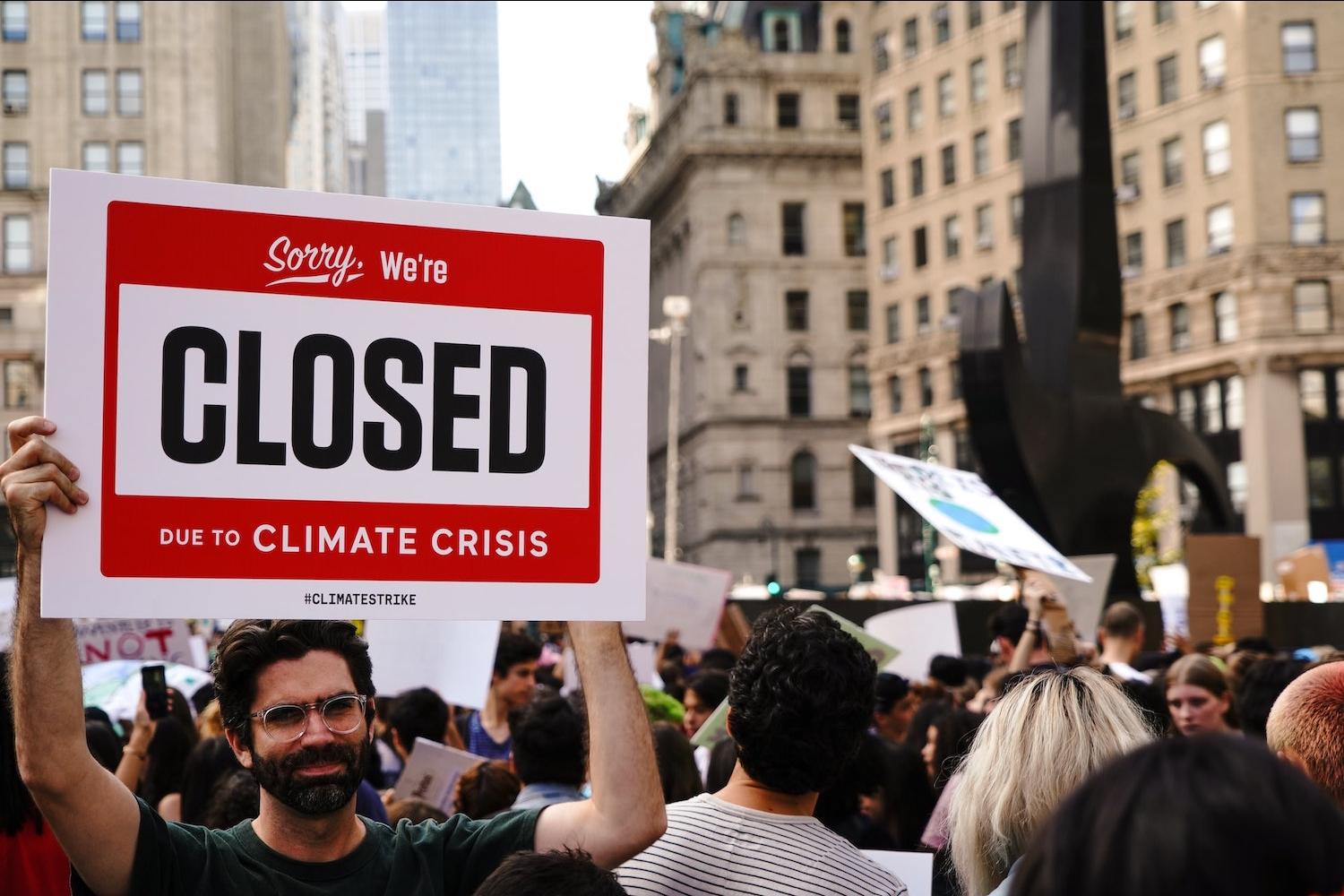
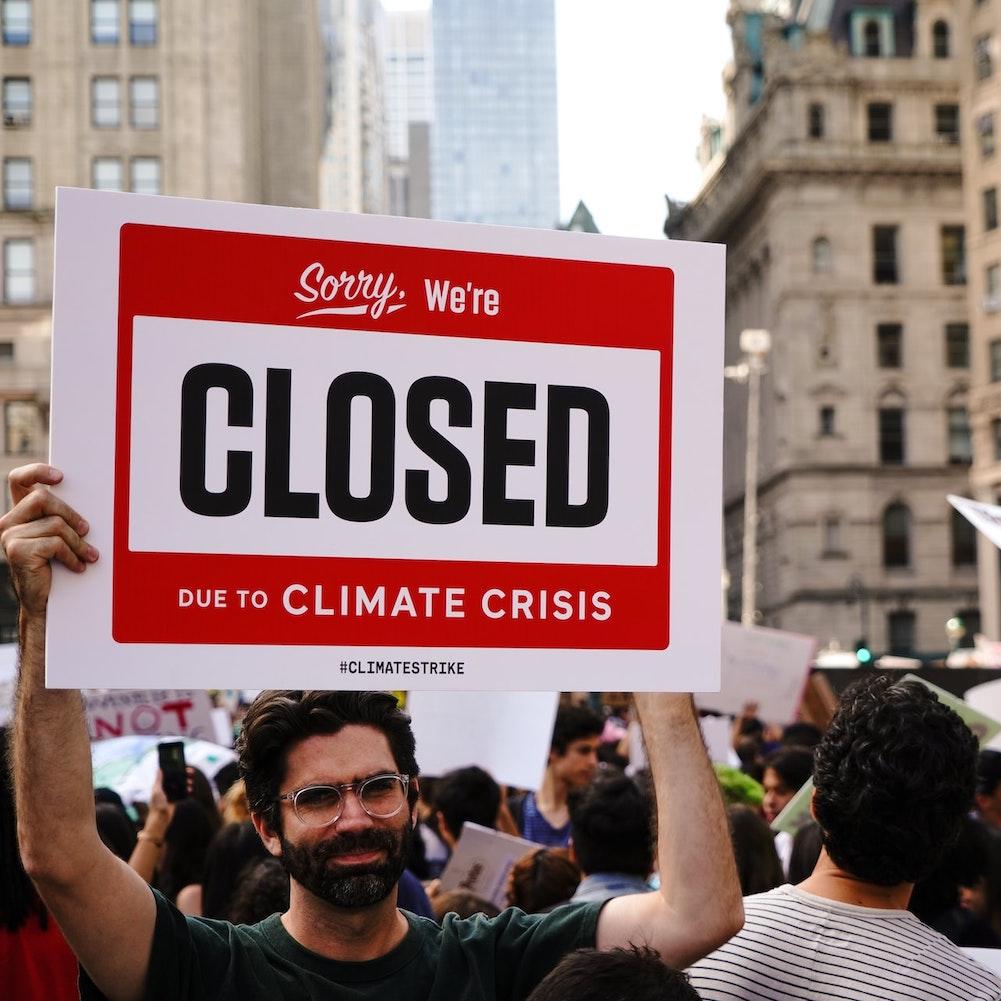
U.S. corporations are clamoring for renewable energy now more than ever before. At the same time, fossil energy stakeholders continue to lobby against progress. Their tactics range from buttonholing top-level policymakers at the COP27 climate talks on down to funding local citizen groups. Business leaders can push back against the obstruction by forming new alliances that support their needs for renewable energy.
Fossil fuel lobbyists rush to COP27
The global reach of the fossil energy industry was very much in evidence at COP27 in Egypt last week.
The organization Global Witness and its two partners, Corporate Accountability and Corporate Europe Observatory, compiled a list of 636 lobbyists directly connected to the fossil energy industry at COP27. The list is based on disclosure forms and other publicly available documents.
That was likely a significant undercount. Global Witness surmises that many lobbyists at COP27 declined to document their connections with fossil energy. The NGO also notes that the list does not include lobbyists from other fossil-related sectors including finance, big agriculture and petrochemicals.
Coalitions push back against fossil fuel lobbyists
Businesses that hope to accelerate the energy transition can support the work of organizations such as Kick Big Polluters Out to help curtail the influence of fossil energy lobbyists at the next annual U.N. climate talks.
Last week, The Guardian took note of a coalition of organizations that submitted a formal complaint against the fossil-friendly attendance policy at COP27.
The complaint was submitted to the Framework Convention on Climate Change (UNFCCC), the branch of the United Nations that organizes the annual COP climate talks.
The complaint charged that the COP talks would “continue to fail to meaningfully address the climate crisis” due to the substantial access of “polluting interests.”
“The framework should prevent entities with private, polluting interests from unduly influencing or undermining UNFCCC activities and processes through their engagement as representatives of non-governmental organizations,” the group stated.
Specifically, the group called upon UNFCCC to tighten up its access and accreditation process by applying established norms and procedures adopted by other U.N. bodies and international organizations.
Fertilizing the grassroots with big dollars
Fossil energy stakeholders are also working the other end of the scale. Local citizens can — and should — exercise their influence on local concerns. However, in the case of opposition to renewable energy, the hand of an organized, stakeholder-funded effort is at work.
The independent news organization Popular Information took note of this under-the-radar lobbying effort in an article last week. Under the headline, “Fossil fuel industry dupes media, quietly funds non-profits to block renewable energy,” reporter Michael Thomas listed three citizen groups opposed to offshore wind farms planned for the Atlantic coast: Save Our Beach View, Save Long Beach Island and Nantucket Residents Against Turbines. As Thomas reported, all three are affiliated with an organization called the Caesar Rodney Institute (CRI).
The CRI connection illustrates how fossil energy stakeholders can funnel influence to local organizations that push back against renewable energy development.
“As of this writing, the ‘Donate’ button on the Protect Our Coast NJ website redirects to a PayPal link that reads ‘Donate to Caesar Rodney Institute,’” Thomas notes.
The Delaware-based organization Meet the Polluters describes CRI as having an outsized influence over state and regional affairs. “Despite its relatively small budget, the Caesar Rodney Institute has emerged as a cog in the State Policy Network’s coordinated attacks on clean transportation policy, even if they represent no one in the state but themselves,” Meet the Polluters states on its website.
Meet the Polluters describes CRI as a “a far-right, free-market advocacy group based in Delaware that receives considerable funding from dark money sources and the Koch-controlled State Policy Network.”
“The institute is a member of and funded by the State Policy Network, a network of right-wing organizations that the Koch network funds to promote junk science, climate denial, and corporate welfare,” Meet the Polluters writes.
“It is also funded by dark money foundations including Donors Capital Fund and DonorsTrust, two pass-through funds that have been called the “dark-money ATM of the conservative movement,” that mask donations from foundations controlled by Charles Koch,” the group adds.
Beware the junk scientist
Fossil energy stakeholders have a long, well-documented record of funding efforts to sow doubt and confusion over the scientific consensus on climate change, going back for decades. It is no surprise to find these efforts resonating in the citizen-scientist area today. It is also no accident.
Ten years ago, local organizations in North Carolina began to follow the public speaking activities of one such person, John Droz, who was front and center in the pushback against offshore wind turbines.
While Droz cultivated a reputation as a citizen activist, the organization Facing South noted that he was a senior fellow with the American Tradition Institute (ATI), “a conservative think tank that's part of a family of advocacy groups founded and funded by fossil-fuel interests.”
Scientific American also published an expose on Droz’s activities back in 2013, taking note that his habitual bespectacled, sweaters-and-jeans attire helped to mask the political influencers supporting him.
“…this semi-retired real-estate investor and self-described environmental advocate spends much of his time quietly and effectively plying the halls of power in Raleigh, N.C., deflecting credit and avoiding the spotlight, observed Scientific American reporter James Borden.
Droz has ventured far beyond North Carolina in recent years. His organization “Alliance for Wise Energy Decisions” advises local groups on opposing wind projects. The fossil energy lobbying organization Heartland Institute promoted Droz and the Alliance for Wise Energy Decisions last February in a podcast headlined, “Industrial Wind: How to Fight It in your Hometown.”
Fight like a “woke”
Against this backdrop, it’s no surprise that Republican office holders and their allies have raised the “woke corporation” charge against businesses that favor renewable energy. The Republicans’ newly won but slim majority in the U.S. House of Representatives will enable them to hammer out that canard on the national stage in the years to come.
However, U.S. businesses that value sustainability have been through waves of opposition before, and each time they have upped the ante instead of backing down.
Business leaders united behind the Barack Obama administration in force in the run-up to the 2015 Paris Agreement on climate change. They also continued to double down on renewable energy all throughout the Donald Trump administration, even as the former president attempted to bend U.S. energy policy toward fossil energy. Within days of President Joe Biden taking office, business leaders also rallied for national unity on climate action.
The next two years will be challenging, but business leaders can seek new alliances with each other, as well as civic organizations and government policymakers, to keep the energy transition moving forward.
Image credit: Katie Rodriguez/Unsplash
Another Step Toward Bringing EVs to More Low-Income Communities
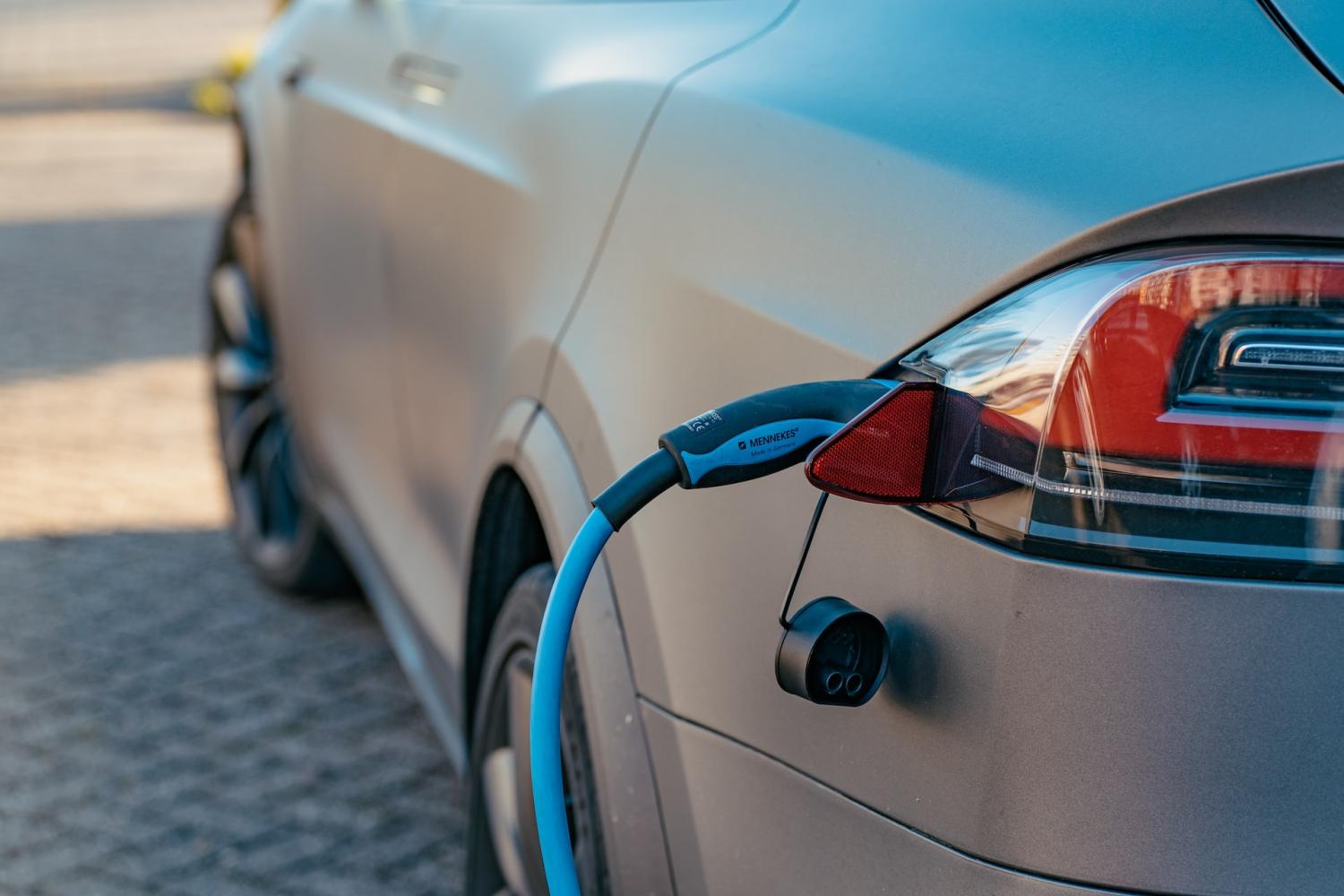
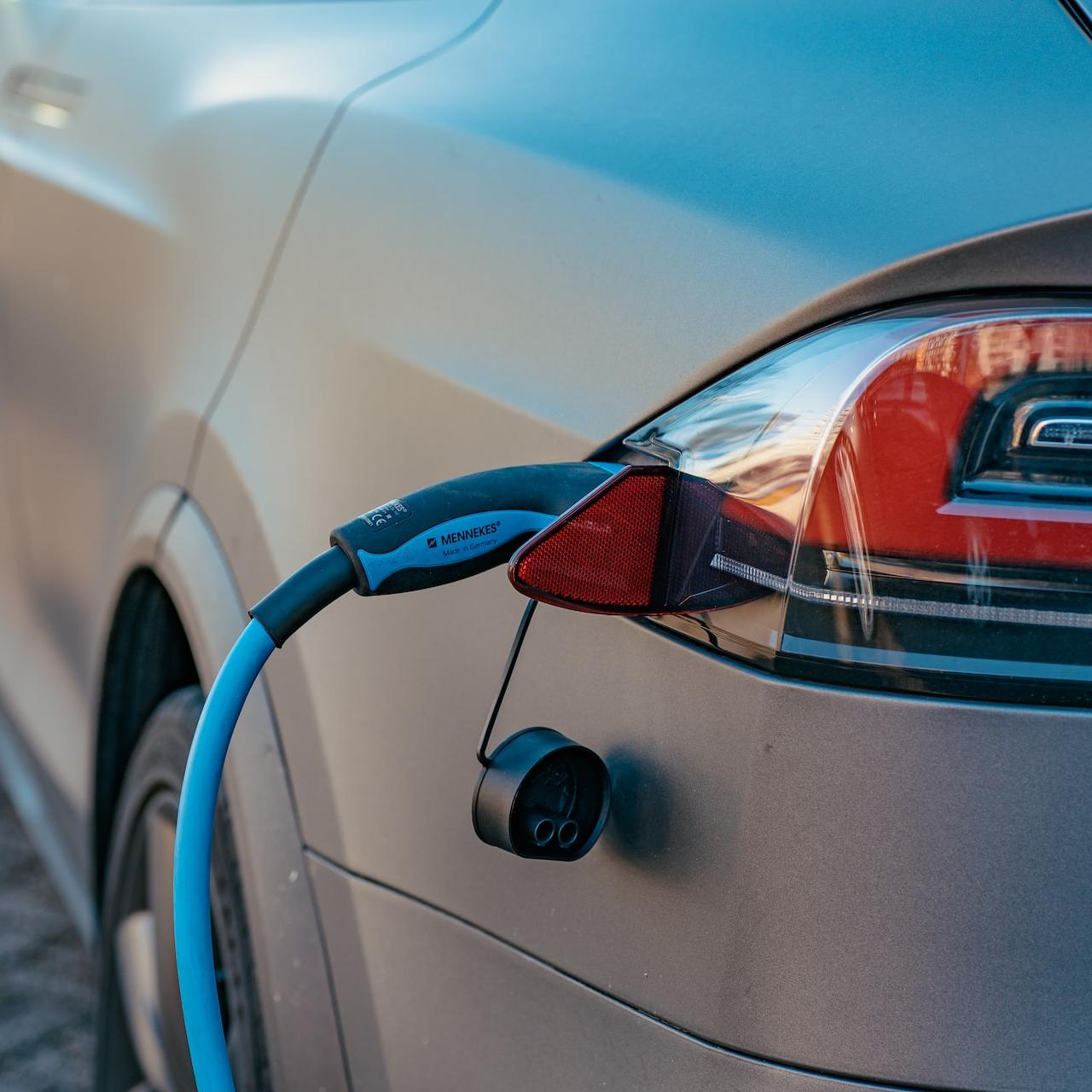
Electrify America is making an additional investment of nearly $3 million to support four community-based organizations promoting electric vehicles (as in EVs, sometimes referred to as ZEVs or zero emission vehicles) education and awareness in low-income and disadvantaged communities in California.
According to a recent press release, this new investment is part of the company’s overall commitment to environmental, social and governance (ESG) practices, and supports the company’s plan to invest $200 million in EV infrastructure and education programs in California through mid-2024.
“In the exciting race to electrify our transportation system, many communities have not had equitable access to the resources and information that can help establish adoption of electric vehicles, said Gabriela Herrera Gugiu, Electrify America’s corporate social responsibility senior specialist, in a public statement. “We believe it’s our responsibility to help create a future where zero emission vehicles can be accessible and affordable to Californians and communities across the country.”
With nearly 800 charging stations throughout the country, Electrify America is the largest open direct current (DC) fast charging network in the United States. Since 2018, the company has announced investments of more than $9 million to help accelerate electric vehicle adoption in California, which has mandated that 100 percent of new cars and light trucks sold in California must be zero-emission vehicles (full battery-electric, hydrogen fuel cell, and plug-in hybrid-electric) by 2035.
Electrify America’s new investment builds on four years of significant investments with community-based organizations (CBOs) and non-profit organizations (NGOs) in low-income and disadvantaged communities throughout California. The investments are intended to support a more equitable transition to EV vehicles.
In addition, the community-based organizations will also focus on home charging education as well as building awareness and engagement connected with Electrify America’s $25 million Green City investment to bring charging infrastructure to the Ports of Los Angeles and Long Beach and help to electrify the tens of thousands of drayage trucks that enter the Port Complex each day.
More than 100 non-profit, private and public entities from across California were invited to submit proposals to support brand-neutral EV education in disadvantaged and low-income communities. The organizations receiving funding include:
Breathe Southern California will host ride-share driver EV educational sessions, a ride-and-drive EV event at a farmer's market, and a miniature EV competition for families. Activities will take place in and around the Long Beach-Wilmington area where the Green City initiative is centered.
Ecology Action will focus on ride-and-drive events including EV showcases, EV purchase support guidance and EV webinars throughout California’s Central Coast and beyond, intended to drive community awareness broadly across the state.
Plug In America is supporting California-based EV education and engagement through ride-and-drive programs across California, EV test drives in rural communities, including the regions surrounding Green City efforts.
Valley Clean Air Now (VCAN) and key partners such as Charge Across Town will continue their comprehensive efforts that offer low-income and disadvantaged community groups in the San Joaquin Valley opportunities to test-drive EVs and to provide hands-on help with qualifying for EVs incentives through community clean car clinics and “Tune In & Tune Up” events. VCAN will also begin to recruit new car dealers to join the California Resources Board’s “Clean Cars 4 All” program, as well as additional community and government collaborations to lower barriers to EVs ownership in disadvantaged communities.
Electrify America’s new investment comes on the heels of the company’s May 2022 announcement that it entered into a 15-year virtual power purchase agreement (VPPA) to build a solar photovoltaic renewable energy generation project in San Bernardino County. Electrify America Solar Glow™ 1 is expected to generate 75 megawatts at peak solar capacity and produce enough completely renewable energy annually to help offset the energy used by Electrify America customers charging on its network.
The company is also investing in clean technology innovations to support sustainable and reliable operations, including more than 100 battery energy storage systems at charging stations throughout California to help stabilize the power grid and maintain pricing, while potentially maximizing renewable energy use from the grid.
Through 2021, Electrify America has invested $400 million in California, with nearly half of that supporting education, access, charging infrastructure and services to promote EV driving, including $18 million in education and marketing in marginalized communities throughout the state.
Expanding EV access will have major social and environmental implications for marginalized communities that have been ignored when it comes to investments in transportation infrastructure except when it comes to building highways and rail lines through those areas. According to a 2019 report, “Expanding Zero Emission Mobility and Access” by the ZEV Alliance and the International Council on Clean Transportation (ICCT), low-income and disadvantaged communities face “disproportionately large” health impacts from climate change and environmental pollution. EVs offer great potential to benefit these communities by reducing pollution and improving public health, particularly for residents who are most vulnerable.
“The unfortunate reality is that the fossil fuel industry lobbies against ZEV [zero emissions vehicles] policies by obscuring the benefits they can deliver to diverse communities and by spreading misinformation suggesting that [EVs) are for the rich only,” according to the ZEV Alliance-ICCT report. “From a moral and practical perspective, a large coalition is needed to support clean transportation, which cannot be done if [EVs] are perceived as an exclusive privilege.”
Image credit: Ernest Ojeh via Unsplash
Electric Vehicles Aren't Enough: We Need Fewer Cars on the Road


Consumer Reports presented an informational webinar on Wednesday, laying out the framework for a transition to cleaner transportation primarily via low-carbon fuels and electrification.
It’s a promising start — what with the variety of drop-in fuels that are hitting the market and price parity for electric vehicles possible as soon as 2025. The model has both government backing and the support of those automakers who have embraced its market potential, especially if that means convincing consumers to trade up sooner than later. But switching to EVs and low-carbon fuels ultimately fails to address the structural inefficiencies that result from dependence on the personal passenger vehicle as the primary mode of transportation in the U.S.
As a result, the transition is less about meeting an immediate need for substantial emissions reductions and more about keeping the auto industry afloat — ultimately falling short of the overall transformation that is needed in the transportation sector to reduce the total number of passenger vehicles produced and on the road.
Transportation is the No. 1 source of greenhouse gas emissions in the United States, according to Consumer Reports, with passenger vehicles responsible for 57 percent of those emissions. The present school of thought aims to fix this scenario by simply swapping out vehicles with internal combustion engines (ICE) for EVs, with low-carbon fuels potentially acting as a stopgap in the meantime. The U.S. government is so confident in this plan that it is investing $7.5 billion toward a charging infrastructure that will install 500,000 EV chargers across the country.
Still, gas-powered vehicles aren’t going anywhere anytime soon. Not only are many of today’s cars still going to be in operation over the next decade, but ICE vehicles are also expected to continue to constitute the majority of sales through at least 2032. This means an estimated 20 million to 36 million more of them could hit the road by 2030, which would put the number of personal vehicles in the U.S. running on fossil fuels at over 300 million.
Transitioning to low-carbon fuels may help lessen some of the sting from that many tailpipes, according to the information Consumer Reports presented last week. The idea is that drop-in fuels made from ethanol, biodiesel and hydrogen could have a lower overall carbon output. There are caveats, of course. Ethanol and biodiesel made from corn and other foods raise ethical concerns — though moves toward producing the fuels from waste products, algae and other non-food sources are promising. Likewise, e-fuels require substantial electricity to make, and the infrastructure to produce them is lacking.
Regardless of whether a vehicle runs on gas or electricity, a substantial amount of carbon emissions are produced in its construction, with EVs actually responsible for a higher initial carbon output (though they make up for it after being driven for a while). Not to mention the resources and environmental degradation involved in mining lithium — a necessary evil when it comes to electrification with current mainstream technologies. In fact, replacing fossil fuels with batteries is starting to look a lot like swapping out one environmental catastrophe for another.
So, what’s the fix? Certainly, there comes a point where we have to accept that our Earth is finite. It does not contain unlimited resources, and it cannot absorb unlimited pollution and abuse. Transitioning to low-carbon fuels and EVs simply is not enough. What’s more, upgrading to electric while the ICE vehicle in the driveway is still running strong could do more harm than good for the environment. The personal passenger vehicle as a primary mode of transportation is just not sustainable for a planet with 8 billion people living on it.
Image credit: Filip Filkovic Philatz/Unsplash
How the Circular Economy Can Ensure a Just Global Energy Transition
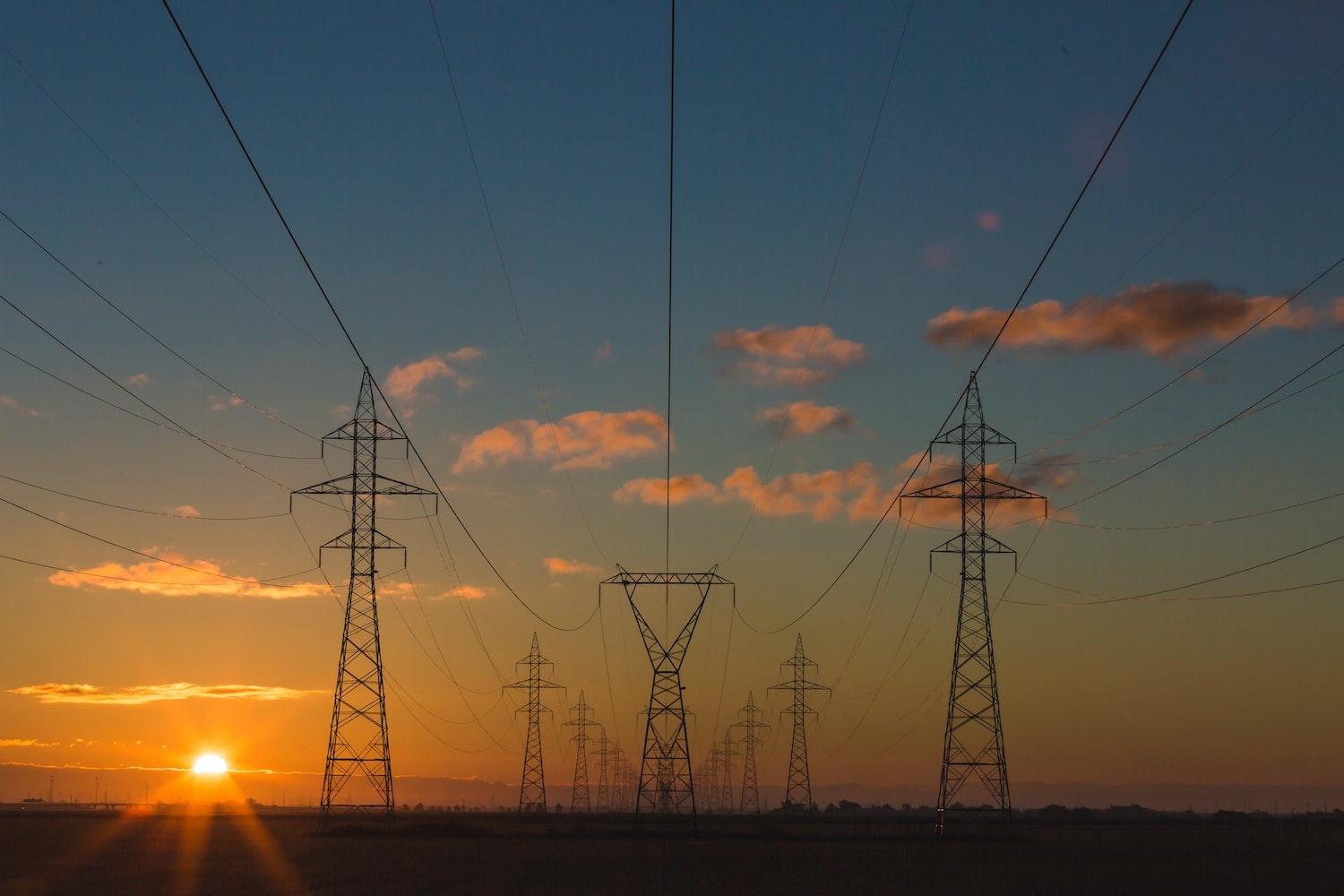
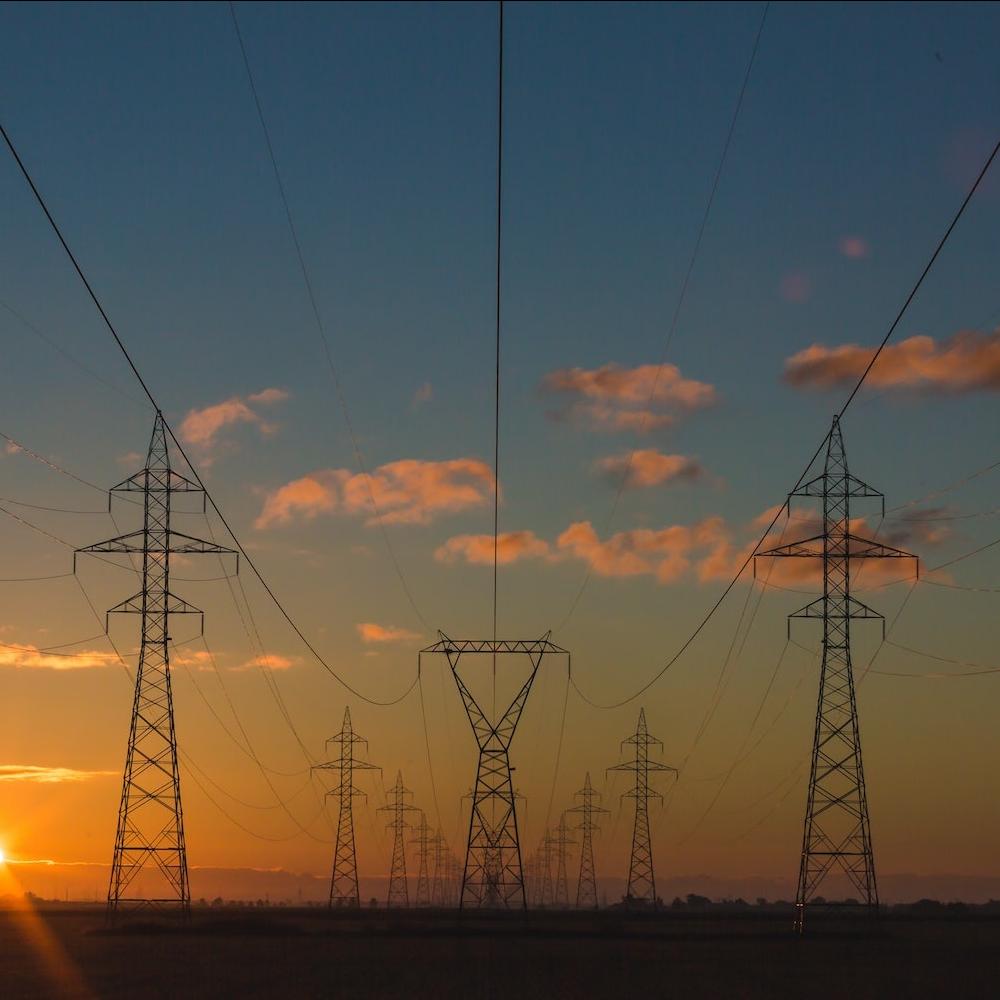
As the world focuses on reducing greenhouse gas emissions and decarbonizing energy, moving away from fossil fuels is a primary objective. But this change brings with it a new set of challenges — namely how to provide the resources for cleaner energy without repeating the mistakes of the fossil fuel economy, such as devastating impacts on the environment, loss of biodiversity, destruction of local communities and wasted resources.
One approach, which was the focus of a roundtable discussion during the COP27 climate talks, highlights the ways that incorporating a circular economy framework into the development of clean energy can contribute to a just transition — as in shift to a low-carbon global economy that is socially equitable, financially viable and environmentally regenerative.
Incorporating the circular economy in the energy transition
Unfortunately, the transition to new sources of energy will require a ramp up of mining for new materials while we move away from fossil fuels. A recent U.S. Department of Energy study, for example, suggests that the U.S. energy system will need more than 3 terawatts of solar capacity in order to decarbonize, which is more than a 40 percent increase over current capacity. Since solar panels require metals and minerals like cadmium, gallium, copper and zinc in order to work, more solar capacity means greater demand for these materials.
It is possible to apply the lessons that have been learned from current mining practices to reduce the impact moving forward. Furthermore, increasing efficiency and designing for reuse of materials can reduce the overall need for materials and ultimately lead to a reduction in extraction.
The Energy Transitions Commission — a global coalition of energy producers, energy-intensive industries, technology providers, financial players and environmental NGOs that are committed to achieving net-zero emissions by mid-century — is looking at several different scenarios to reduce impact. That includes exploring how to reduce the current projected need for new materials through increasing efficiency and developing circular strategies for recycling and reuse of materials, Mike Hemsley, deputy director of the Commission, said at COP27. Furthermore, technologies that utilize materials that are currently available in abundance are being examined.
At the other end of the lifecycle, the U.S. National Renewable Energy Laboratory (NREL) is developing strategies to deal with solar waste. These include designing “integrated energy systems'' that combine advancements in generation, storage, efficiency and smart controls; moving toward zero-carbon manufacturing and materials; and identifying and utilizing alternative materials that are most “Earth abundant” and “most benign,” said Ron Benioff, international program manager for NREL.
At this time, recycling solar waste is more expensive than disposal, Benioff said. But policy innovations — including setting standards for recyclability, offering financial incentives and engaging in consumer education — could offset this and support circularity, he told leaders at COP27.
Enel, a global utility company based in Italy, has identified a process to provide clean energy through a circular economy by relying on renewable and recyclable resources — and requiring its suppliers to do the same.
The company is working to achieve circularity “not only by recycling but by design,” said Luca Meini, head of sustainability initiatives and circular economy at Enel. The company began offering financial incentives and collaboration with its more circular suppliers, and Meini says that circularity has to be a part of the framework of the core business. The result has been profound, and the company has continued to make a profit.
Pushing toward a just transition
There is a “dual mandate to build the decarbonized future and to think today about how we create the financial and business models and distribute our finance and support in ways that will allow that to go forward in a more equally distributed approach,” said Jennifer Layke, global director of the Energy Program at the World Resources Institute (WRI).
To this end, she identified three areas of focus. These include “to innovate product design at the outset” to minimize material use through reuse of resources that are currently available. Stakeholders must also work to identify the “business model shifts” that will be required to create “lifecycle opportunities” for takeback and circularity, and they’ll be challenged to address the “inequality in benefits to the communities that are impacted by the extraction and production of materials,” Layke said.
When looking to decarbonize, energy stakeholders must “start projects from the beginning that are going to benefit the local economy and not have adverse impact on the local environment,” Hemsley of the Energy Transitions Commission added. “Once those projects are done, how can you then return the land to what it was before so you can have as little impact as possible?”
The public has the power to push this vision into reality, Hemsley insisted — pointing to consumer activism that spurred recent changes in the auto industry. As consumers grew more aware of problems with cobalt mining, automakers have moved swiftly to replace cobalt with nickel in electric vehicle batteries, and stakeholders are continuing to push the industry to more closely consider environmental impact and human rights when sourcing EV battery components.
Image credit: Matthew Henry/Unsplash
Emerging from COP27: A New Standard for Protecting Indigenous Lands


Last week during the COP27 climate talks, three major sustainability organizations partnered together to release the Land Rights Standard, a new set of best practices and principles for respecting the land and resource rights of Indigenous peoples, Afro-descendent peoples and other local communities. The Rights and Resources Initiative, the Global Landscapes Forum and the Indigenous Peoples Major Group for Sustainable Development launched the new standard at a sideline event during the U.N. climate conference in Egypt.
The new Land Rights Standard targets investors, companies, civil society organizations and institutions involved in landscape projects, encouraging them to better respect the rights of — and create partnerships with — local communities and groups, particularly those who have been historically marginalized.
Centering territorial and resource rights for Indigenous communities
The standard seeks to respect the territorial and resource rights of Indigenous and Afro-descendant peoples and other local communities — with the goal to promote the legal recognition of those rights, and require full collaboration in all programs, projects and initiatives.
Pasang Dolma Sherpa, executive director of the Center for Indigenous Peoples' Research and Development (CIPRED), emphasized the need for non-state actors to collaborate with Indigenous communities at the COP27 sideline event about the new standards.
“Indigenous peoples, local communities, and Afro-descendent communities are crucial in the discourse of climate change, natural resource governance, and anything in relation to the land," Sherpa said. "Often, Indigenous issues and concerns are seen as a threat by state parties. It is important to have dialogue on how the role of Indigenous people and local communities could contribute to the sustainability of natural resource governance.”
To that end, the Land Rights Standard promotes conservation by local communities and encourages a rights-based approach to conservation projects, Sherpa explained. “The new standard is designed to help non-state actors, conservation organizations, and the private sector recognize the rights of the Indigenous people and local communities, and it encourages outside agencies to participate with local communities and gain consent for environmental projects,” she elaborated.
This new standard also seeks to include women’s voices. Cécile Ndjebet, president of the African Women’s Network for Community Management of Forests (REFACOF), said, “We can leverage the Land Rights Standard to promote responsible investment, but promoting women's equal inclusion and participation in governance and ensuring zero tolerance for violence and harassment is very, very important to this.”
Supporters of these new guidelines say they can assist companies and other non-state actors on how to mitigate obstacles for women, Ndjebet added. “We encourage actors to forge powerful alliances with women's organizations across all regions to ensure that their investments won’t leave the women who are on the frontier of climate mitigation and conservation behind,” she said.
Does sustainability need another standard?
When the Land Rights Standard was launched at COP27, it was immediately endorsed by other standard-setting organizations.
Dr. Solange Bandiaky-Badji, president of the Rights and Resources Initiative, acknowledged that there is a growing body of sustainability standards and principles. She told the COP27 audience: “Why is the Land Rights Standard necessary in the landscape of all the other [standards]? The other efforts have been uncoordinated and lack globally-recognized principles that are grounded in human rights law and informed from Indigenous peoples, local communities and Afro-descendent people. The Land Rights Standards are simple principles that reflect best practices in landscape-level actions and investments supported by institutions, companies, investors and activists.”
The Forest Stewardship Council (FSC) is one group that certifies sustainably managed forests. Kim Carstensen, the director general of the FSC, said the organization is committed to integrating principles from the Land Rights Standard into the next generation of FSC standards.
“We have been a standard carrying and developing organization for over 25 years. This new Land Rights Standard will be a new milestone around which we can further develop our standards," Carstensen said. "In our next revision, we will look at the new standards and ask what we can use as a guiding tool. We will integrate it into our thinking about the next generation of our standards, and we can all work together to make it something that is seen by and understood by the people who need to use it in the future.”
What’s next?
The founding partners are asking conservation organizations, companies and investors to consider endorsing the Land Rights Standard. Bandiaky-Badji noted: “These standards are not legally binding. They are voluntary. We hope [non-state actors] will promote it within their institutions and rights holders will contribute to promoting awareness of these standards.”
The Rights and Resources Initiative, works to advance the forestland and resource rights of Indigenous peoples, Afro-descendant peoples and local communities, is also working to include the principles of the Land Rights Standard as a standing agenda item at climate-related events, Bandiaky-Badji said.
Image credit: Azzedine Rouichi via Unsplash
Can Seagrasses Fight Global Warming and Spur Sustainable Development?
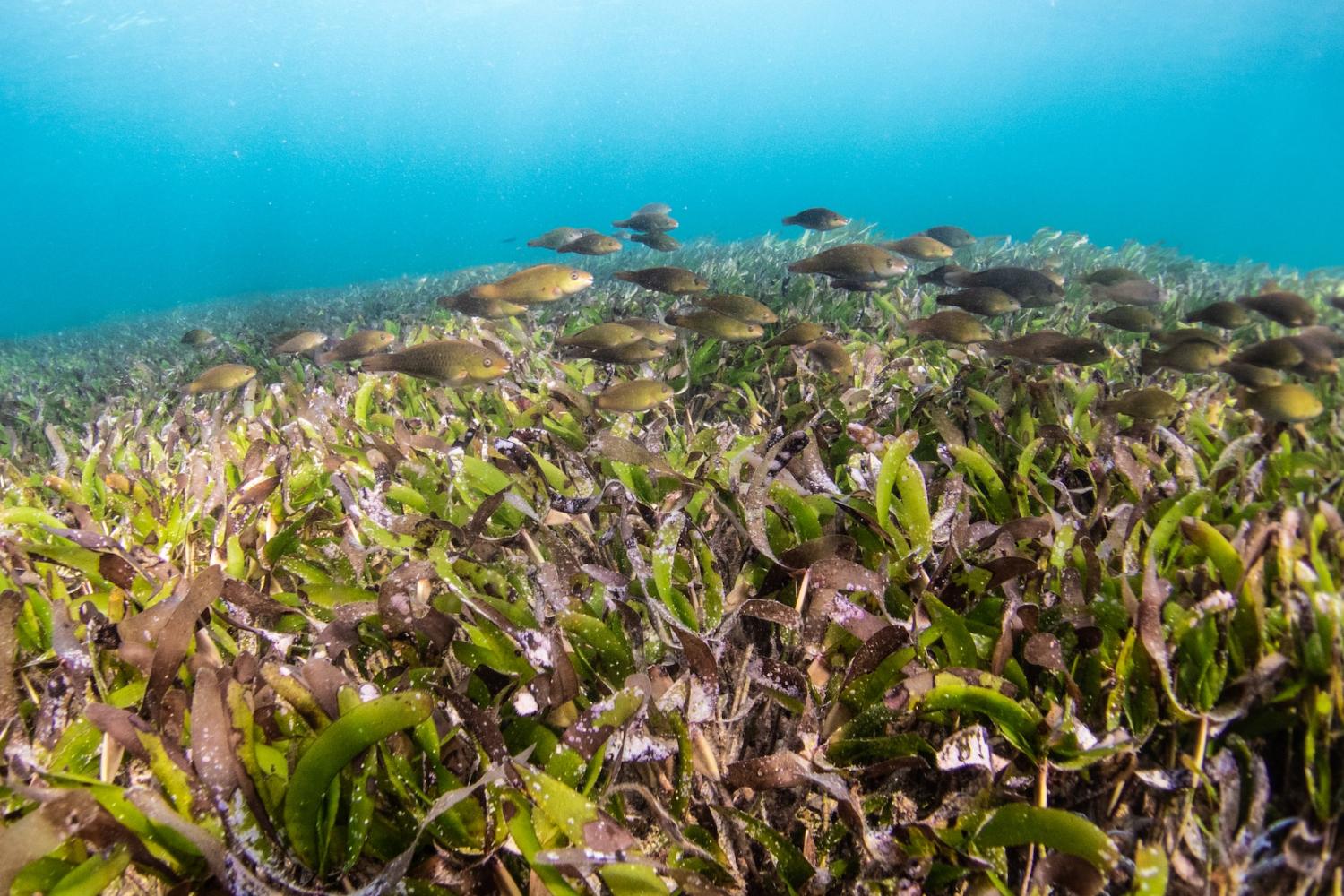

As the COP27 climate talks in Egypt wrap up, we have learned more about a frequently overlooked ecosystem in the fight against climate change: seagrasses. While they’re often overshadowed by neighboring coral reefs and mangroves, seagrasses are one of the most valuable coastal ecosystems in the world. They absorb carbon up to 35 times faster than tropical rainforests, soaking up to 10 percent of the ocean’s carbon each year.
Seagrasses belong to the larger set of blue carbon ecosystems. This colorful name refers to carbon captured from the atmosphere by marine and coastal ecosystems. And the tidal marshes, mangroves and seagrasses lining our coasts are a powerhouse for storing carbon. For instance, the protection of blue carbon ecosystems could prevent the equivalent of 670 billion pounds of carbon dioxide (304 billion kilograms) from being released each year.
Blue carbon ecosystems are champions in fighting climate change. Their protection could provide one of the largest climate benefits on a per-acre basis compared to other land-use projects. Restoring these valuable environments could soak up the equivalent of 841 billion kilograms of carbon per year, or around 3 percent of annual global emissions. This climate change mitigation translates into $1,317 per hectare annually for seagrass meadows.
The environmental and economic benefits of seagrasses
Besides their ability to fight global warming, seagrasses also provide numerous other benefits. Called the lungs of the sea, they release oxygen into the water, while also stabilizing sediments, cycling nutrients and reducing coastal erosion. A range of commercially and recreationally fished species such as cod, snapper, pink shrimp, conch, spotted seatrout and pollock are found in seagrass beds during part of their lifecycle. In fact, these areas support commercial fisheries worth over $4,800 per hectare per year. Finally, charismatic species like sea turtles, manatees, dolphins, stingrays and wading birds feed in seagrass beds.
What’s threatening seagrass?
Unfortunately, seagrasses are declining rapidly, and about 30 percent of their global presence has been lost since the late 1800s. Densely populated areas often surround seagrasses, which stresses them. Regions most at risk for seagrass loss include Europe, Japan, the western North Atlantic, the northeast Pacific and several locations in Southeast Asia.
A long list of threats is driving seagrass decline including coastal development, dredging, disease and invasive species. In addition, poor water quality, which limits the light available for photosynthesis, is a major threat. Destructive fishing practices such as anchor damage and trawling can also harm seagrass beds. Finally, climate change — including warming waters and ocean acidification — is taking a toll on seagrass meadows.
What’s the solution for saving seagrass?
The COP27 talks illustrated pioneering work in preserving seagrass. For example, in Madagascar, Blue Ventures supports local fisheries to protect blue carbon ecosystems. The social enterprise helped to establish locally-managed marine areas, where local anglers conduct seagrass mapping and monitor ecological conditions. These community conservation initiatives benefit communities by providing substantial increases in fisheries' yields and income.
Another example comes from Turkey. Along its coastline, the Mediterranean Conservation Society and Flora and Fauna International have developed no-fishing zones, along with a system of community rangers to patrol these areas. These zones protect seagrass meadows from damage and help fish populations recover, while also supporting local communities and anglers by boosting fish yields.
Blue carbon markets
One way to protect this unique ecosystem is through carbon credits. However, blue carbon credit programs are new, while the ones for seagrasses are in their infancy. The first seagrass project to apply for carbon credit certification did so in 2021. Yet while the market for blue carbon is small, it’s growing exponentially. The overall carbon credit market is estimated to be worth $50 billion by 2030, and project planners hope to claim a slice of that for blue carbon.
While it may be too soon for seagrass carbon credits, some businesses are already offsetting their emissions through other blue carbon credit investments. These credits need to be quantified accurately, independently verified and monitored. Additionally, these programs should be permanent, ensure that the mitigation activity wouldn't have taken place without the carbon credits, and involve locally compensated communities.
Carbon credits are a great investment, but they should be viewed as part of a larger strategy to fight against climate change. Businesses should work to reduce and avoid emissions along with mitigation. Along with carbon credits, embracing more environmentally friendly and sustainable practices will go a long way in protecting our valuable tidal and marine ecosystems — and generate sustainable development opportunities as well.
Image credit: Benjamin L. Jones via Unsplash
Building Organizational Credibility Through Sustainability


Organizations have faced numerous challenges over the past two years and will likely continue to operate in an environment fraught with risk as they navigate the ramifications of an ongoing global pandemic, climate change and unprecedented supply chain disruption.
Balancing both immediate stability and future growth can present different challenges spanning an organization’s capacity, people, and processes. However, if leaders reframe their approaches and take a closer look at their core business models during this time of evolution, they could unlock opportunities to mitigate future disruptions through a new model rooted in the application of sustainability.
The bigger the challenge, the bigger the opportunity
Facing extreme temperatures, drought, flooding and other climate impacts, organizations have a growing challenge ahead of them that has resulted in — and will continue to create — disruptions and increased costs related to their sites, property and supply chains.
Across the world, climate change is having a significant impact on the overall risk to workers, particularly those who work outdoors. Many business leaders have noted specifically how recent extreme weather events have slowed operations and taken a heavy toll on employees. Another significant effect of increasingly climate unpredictability and volatility is directly or indirectly harming an organization’s infrastructure. Too many businesses are still in the early stages of establishing formalized practices relating to continuity management and climate risk-related events, worsening widespread disruption.
Sustainability represents a massive transformational opportunity for the organizations who put innovation and new business models at the heart of their approach; however, awareness and action are two very different things.
Unlock opportunity through climate risk adaptation
To better understand exposure to climate-related risks, organizations can leverage climate forecasting data to identify and evaluate future climate impacts based on the locations and unique characteristics of their operations and supplier sites. With this, an organization can begin to prioritize points throughout their value chain based on how they are exposed, the timing and speed of climate risks, and the level of criticality of the sites.
Equipped with an improved understanding of climate exposure, leaders can then engage sites to understand their awareness and adaptive practices, which provides a more comprehensive understanding of vulnerability. With this more holistic view, leaders can then begin to adjust or build capacity and practices needed to properly understand and manage the specific risks across all sites and supplier sites.
By taking these first steps, organizations can begin developing a sustainable strategy to reduce climate risk exposure and limit the burden on organizational resources and suppliers. This should also be done in parallel with carbon reduction plans, which account for some of the transitional risks as the world shifts to a low-carbon economy.
Building credibility through sustainability
The potential pitfalls of ignoring climate risk are not limited just to infrastructural issues. Investors, customers and insurers increasingly view climate disruption as a material risk that requires a structured, scalable framework of practices to mitigate disruptions.
Institutional investors in particular have begun factoring climate risks into their rating processes following BlackRock CEO Larry Fink’s bold 2020 letter proclaiming climate change as an essential differentiating factor for future investment considerations. In addition, governments and leading organizations around the world are rapidly adjusting laws and reporting requirements around key climate factors such as carbon emissions and supplies of rare minerals, like those used in the much-discussed semiconductor supply chain.
One example lies in the new rules recently proposed by the U.S. Securities and Exchange Commission (SEC) related to public companies’ disclosure of climate-related risks. Businesses are likely to see increased investor and customer scrutiny resulting from these guidelines, which would require them to “include information about climate-related risks that are reasonably likely to have a material impact on their business, results of operations or financial condition, and certain climate-related financial statement metrics” in a note to their audited financial statements. As governments continue to impose additional reporting and disclosure requirements, it becomes even more urgent for businesses to get a handle on how climate change factors into their operations.
But rather than view these new considerations and evaluations as a nuisance or a threat, businesses must see them as a unique chance to build global credibility beyond their core business functions. Companies that can offer examples of sustainability success will soon be positioned for considerable growth and investment beyond their peers. While properly adhering to these new expectations may require a short-term investment in legal experts and climate specialists, for example, the long-term gains should prove to be worth the initial expenditure.
Sustainability represents a huge transformational opportunity for organizations. Those who put innovation and new business models at the heart of their approach today will be well placed to unlock the future benefits of this opportunity and drive change across their organizations.
Image credit: Pexels
Yes, Black CEOs Now Command a Big Paycheck. Yes, There’s Still a Problem.


Don’t assume diversity in the workplace has been solved because Black CEOs make more than white execs.
A curious trend has occurred in the world of executive pay in the U.S. It turns out that Black CEOs on average are paid more than their white peers. Incidentally, when companies appoint them as CEOs, their market caps enjoy a jump in value, according to a recent study.
But that doesn’t mean we’re seeing progress when it comes to ensuring we have executive leadership that reflects not only what America looks like today, but also the depth of talent we still leave untapped in this country. (Not to mention the pay gap between CEOs and what the average U.S. corporate employee makes, but that's another issue.)
To learn why this seemingly good news really isn’t all that, 3p recently caught up with Marvin Owens, chief engagement officer at Impact Shares and a former NAACP senior director. He discussed why the dearth of Black CEOs still must be addressed, shared his perspective on the challenges that Black professionals often face, and offered suggestions on how to increase the pipeline of talent for Black professionals.
Editor's note: Be sure to subscribe to our Brands Taking Stands newsletter, which comes out every Wednesday.
On the surface, the high rate of pay for the six Black CEOs who currently head Fortune 500 companies makes it sounds as if the business community is buying into fairness and equity when it comes to hiring
But Owens says the reality is more of a mixed bag. “What this phenomenon shows is that Black CEOs can demand higher pay due to the smaller pool of candidates,” he told us. “While higher salaries are a good thing, it also indicates that firms are choosing from smaller pools, which impacts the market. It also indicates that these firms have done a poor job of developing and maintaining internal talent.”
Further, what appears to be a bonus for leading Black executives is actually reflective of what’s been going on with diversity, equity and inclusion (DEI) across corporate America. “Most Black professionals I’ve engaged most recently point to a marked difference in how their firms are communicating a commitment to racial equity, but with little change in policies, or internal resource commitments, to develop a diverse talent pool and ensure accountabilities and remedies for inequity,” Owens explained.
One of the largest barriers to opening up more opportunities for talented employees of all backgrounds is that many organizations are still resisting calls to disclose their hiring data based on race and ethnicity.
But as is the case with any company’s decision-making processes, you can’t map out the best strategy without solid, informative data. As a result, many companies are actually missing out on hiring the best possible current and future leaders. “Solving problems like this always begins with gathering the data,” Owens told 3p, “and as we’ve seen with the general corporate resistance to racial equity audits, the ability to get to a solution is hampered by an unwillingness to gather and disclose the data. Data gathering and disclosure is viewed through the lens of risk, and not opportunity.”
As the saying goes, hiring a talented workforce and the best possible leadership is a journey. Concern over today’s lack of diversity within the workforce shouldn’t get in the way of ensuring that a company’s C-Suite of tomorrow includes people who are stellar at what they do, but who often find themselves overlooked in today’s corporate world.
The hard work begins now — or, in reality, it should have started many yesterday’s ago. Organizations that say they’re focused on just, fair and inclusive hiring can start by looking within, Owens advises. “Companies committed to closing the racial pay gap should begin with their own employees, and assessing whether inequities exist (intended or unintended),” he said.
Business leaders who believe their current methods of hiring can remain under the radar are mistaken. More stakeholders are noticing, particularly the ones who buy the equities — as well as those who write the rules. “Investors and regulators have already underscored the importance of human capital," Owens explained. "A firm enacting internal policies that not only support pay equity, but provide for accountability and remedies when inequity exists sends a message to the broader market, and ultimately impacts public policy.”
And it works both ways, as policymakers will notice that if something works well in a business setting, it can work in other spheres as well. “Corporate behavior has enormous influence on public policy,” Owens said.
While many companies have gone silent two years after they made a copious amount of promises after George Floyd’s murder, it is still not too late to follow through. Owens suggests a three-pronged approach, starting with: “Assess the current state of your firm relative to this issue. Racial equity audits that focus on human capital can be an extremely helpful tool to establish a starting point based on data.”
Then, it’s important to listen to employees — and perhaps branch out to prospective employees, too. “Engage current Black professionals and get their sense of the problem, the culture and their experiences," Owens advised.
Finally, understand there are no quick solutions — in fact, it’s best to develop a plan that will work for a long time instead of seeking quick answers. “Invest in the development of a diverse talent pool, not with expectation of short-term returns, but long term,” Owens concluded.
Image credit: Taylor Grote via Unsplash
Plastics and Their Role Within a Global Clean Energy Transition
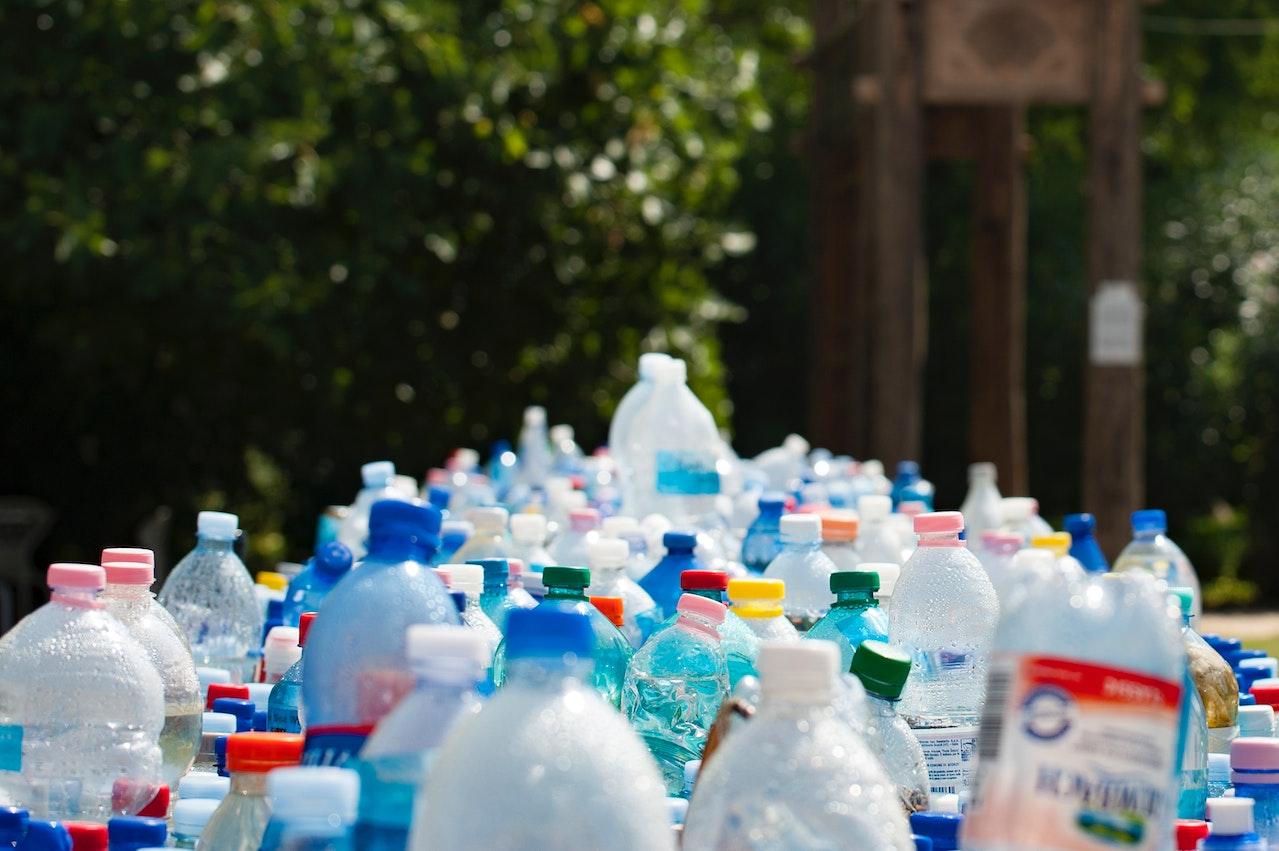
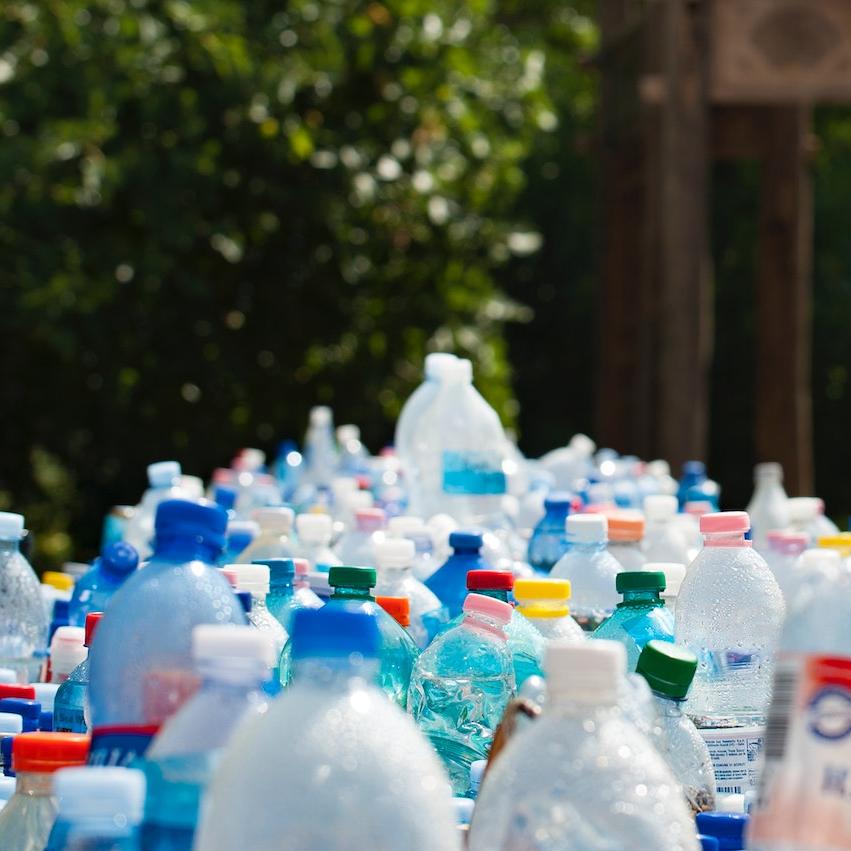
At the conclusion of the Accelerating the Clean Energy Transition by Ending Plastic Pollution discussion last week at COP27, the moderator, Aarthi Ananthanarayanan, who is the director of the Climate and Plastics Initiative at the Ocean Conservancy, closed with a startling statistic: More than half of the plastics ever made were manufactured in the 21st century.
Startling, but unsurprising. There are the plastics in daily use that are easy to see — our keyboards, our phone cases, our water bottles and our food containers. Then there are the more insidious plastics we are mostly unaware of, such as the microplastics in our clothing, cosmetics and personal care items.
This increase in the pervasiveness of plastics coincides with the growth of greenhouse gases in the environment. As Ananthanarayanan explained, plastic production accounts for 6 to 8 percent of carbon emissions, equivalent to the emissions of the aviation industry. And this percentage is projected to increase as petrochemical companies transition their products from energy into plastics. By 2050, an estimated 20 percent of global oil demand will be in the plastic sector. Madeline Rose, climate campaign director for the nonprofit Pacific Environment, identifies this shift as “a lifeline industry for oil and gas,” as fossil fuels are phased out of other markets.
A global plastics treaty
From Nov. 28 to Dec. 2, the United Nations will bring together 196 countries in Uruguay to agree upon a global plastics treaty. The goal of the treaty will be “to promote sustainable production and consumption of plastics from product design to environmentally sound waste management through resource efficiency and circular economy approaches,” according to the U.N.
Cristina Rodríguez, director of climate change adaptation and desertification with the Ministry of the Environment of Peru, hopes for an “ambitious and realistic treaty” for the reduction of plastic at the meeting in Uruguay. The discussions will include, among other areas, “the development of national action plans … to work on the prevention, reduction, and elimination of plastic production," as well as "a broad dialogue of priorities, needs, challenges, and barriers" with a focus on "technical assistance and financial support,” she said.
San Francisco-based Pacific Environment, which advocates for conservation and restoration along the Pacific Rim, is advocating to “completely phase out single-use plastics, curb durable plastic production and pursue an end state of zero-waste,” Rose said. At COP27, she put forward a four-pronged approach that includes reducing production and demand for single-use plastics, increasing durability in medical plastics, shifting to a reuse and refill model for shopping and packaging, and adopting smarter recycling and end-of-life approaches.
The role of intersectionality in decarbonization
Earlier this year, Peru formed an initiative with Chile, Colombia, Costa Rica, Dominican Republic and Uruguay to incorporate a circular economy into their indices. This initiative asked for technical assistance from the U.N. Climate Technology Center and Network to prepare guidelines for monitoring and evaluating the impact of circular economy measures on achieving their national climate climate targets, Rodriguez explained at COP27.
Additionally, a cessation of plastic incineration would have an immediate impact as this process increases the lifecycle of greenhouse gases by 30 percent, Rose added.
Fossil fuel subsidies are also a contributing factor to plastic production rates, as 60 to 70 percent of plastic production costs can be attributed to fossil fuels, Ananthanarayanan said. Without these subsidies, the plastic circular economy becomes a more financially desirable option — and in fact she claims that a plastic circular economy is one of the least expensive decarbonization options to fund.
Grassroots efforts
Sharon Levine, founder of Rise St. James, a grassroots organization that prevented the construction of a new plastics plant in St. James Parish in Louisiana, has firsthand knowledge of the benefits of plastic reduction. The plant, which would have been used to produce single-use plastics, would also have been one of the largest producers of greenhouse gas emissions in the U.S.
This plant would have become the 14th plastic manufacturer in the parish, where the rate of death by cancer is 50 percent higher than the national average, Levine said.
A move toward an elimination of single-use plastic combined with a circular plastic economy will have a significant impact on greenhouse gas emissions and plastic production and pollution. As Levine reminded attendees at COP27, “We can go back to the way it was when I was younger and we lived without plastics.” It was not that long ago that we did not have such a reliance on plastic, and we can return to that time as a blueprint to move forward.
Image credit: Pexels